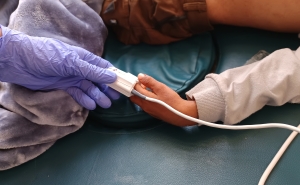Spotting Rumors and Misinformation About COVID-19
As the COVID-19 pandemic continues, public health organizations like Johns Hopkins Bloomberg School of Public Health are focusing efforts on research to slow the transmission of the novel coronavirus and safely treat people who become infected by it.
Our understanding of the virus and its effects has evolved as we have learned more about it. At the same time, it is common during health crises for myths, rumors, and other types of misinformation to spread. Social media and other digital platforms help people connect and share accurate information, but these platforms can also be used to spread misinformation.
To help people understand what is accurate, Johns Hopkins University and Medicine collect the latest evidence-based guidance and resources on COVID-19 and the novel coronavirus on three landing pages:
These pages aggregate information that has been vetted by Johns Hopkins experts, drawing upon expertise from across the University. We encourage you to visit (or direct others to) these three sites for our latest information.
Additional content from Johns Hopkins-affiliated organizations and references to Johns Hopkins expertise in reputable media outlets will be shared from our verified social media accounts. Please follow @JohnsHopkinsSPH on Facebook, Twitter, Instagram, and YouTube for the latest information.
A Note on Misinformation:
If you encounter content on social media, in emails, or elsewhere on the internet that has been attributed to Johns Hopkins experts, there are three simple steps you can take to verify its authenticity:
- Check for attribution. Reputable content should always cite sources—either by linking to a page on a trusted institution’s website, a health department’s website, or an article in a newspaper or peer-reviewed scientific journal. If you see web content, social media posts, or emails that do not name or properly cite sources that you can verify, then you should carefully consider whether it is worth sharing with others.
- Be wary of generalizations and errors. Science communication works best when it is clear and direct, and it should be precise and well-written. Be skeptical of social media posts, online content, and emails that seem too broad, or contain spelling and grammatical errors.
- Look for acknowledgment of the content on the institution’s website. The latest evidence-based content from Johns Hopkins experts is published on these three websites: coronavirus.jhu.edu, jhsph.edu/covid-19, hopkinsmedicine.org. If you encounter claims on social media that reference Johns Hopkins or its experts, and you are skeptical about their veracity, you should check these three sites to see if the content is listed there. If it is not, the content cannot be verified.
Example of Misinformation:
Bloomberg School experts have debunked several common myths, rumors, and pieces of misinformation on this Myths vs. Reality page in our COVID-19 Expert Insights hub, and common misconceptions are regularly addressed in a series of FAQs.
One additional example of common misinformation is the “excellent summary” of advice on how to avoid catching COVID-19 that was widely circulated via email and on social media in March 2020. This “excellent summary” was purported to originate from Johns Hopkins but in fact it did not originate with Johns Hopkins University and the information contained within lacks credibility.





